A review of Marvel Champions the Living Card Game
Intro

Marvel champions is the latest living card game (LCG) from fantasy flight games. If you are familiar with other entries in this series of games, such as Arkham Horror The Card Game, then not much introduction is needed. These games come with a core set that gets you started and allows/encourages you to expand your gameplay through additional expansion packs. Unlike some games on the market, these LCGs and their expansions are not randomised and you always know what you’re getting in your box/card pack.
In Marvel Champions you can play solo or cooperatively with 2-4 players, unlike past LCG’s such as Arkham Horror only a single core set is needed for 4 players. Included in the box are 5 classic marvel heroes: Iron Man, Captain Marvel, Spider-Man, Black Panther and She-Hulk. Each player chooses a hero and builds a deck of cards (Spider-Man and Captain Marvel come with pre-build decks that let you jump straight to playing!). With your deck you are thrown into some classic comic action and tasked with bringing down a big bad, along with their minions. The loop of gameplay is fairly straight-forward, players will take turns playing cards from their hands, villains will play cards from their ‘encounter’ deck and build up a threat meter, if at any time the players lose all their health or the villain amasses enough threat tokens you lose, if the heroes reduce the enemy’s health, then they win. It’s a little more involved and can take a few turns to memorise the pattern, but there are some handy reference cards to keep you right.
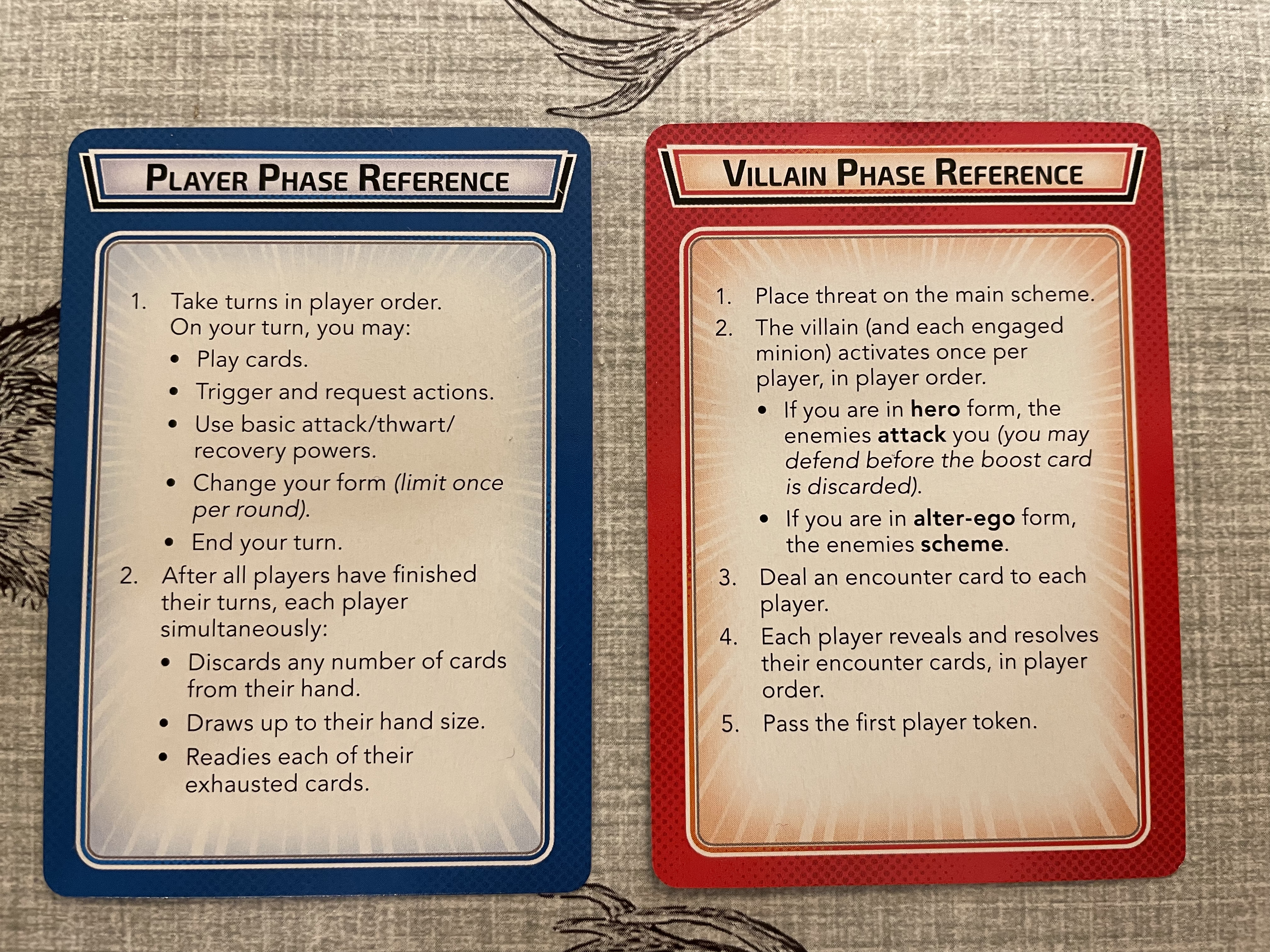
Gameplay
For this review we played 2-player, which Board Game Geek (BGG) voters suggest is one of the best player counts. So be aware of this if you do plan on playing with larger groups. I had played before looking at these votes on BGG and I can imagine them to be pretty accurate. The game scales by multiplying actions of the enemy by player count. For example, during the enemy phase each player is delt a card from the encounter deck, more players = more chaos by the villain. At two players I never felt like my turn was too far away, at 4 I could easily see this becoming an issue where the enemy makes such a large leap forward between my turns that I may feel a bit weak and helpless (5 damage in a turn on a 40 health Ultron feels impactful, on 80 health Ultron it could be demoralising). But I haven’t played this way so I cannot do more than speculate to the reasons for BGG votes.

One of the superhero inspired features of this game is that each character card is double-sided. In an almost perfect metaphor one side of the card is the powerful smashing, blasting, evil thwarting hero and the other is the person behind the mask. Once per turn a player may flip between these two forms, many cards in your deck will specify which form to be in, adding additional strategy and planning requirement (e.g., Peter Parker isn’t going to be allowed to deliver a web-swinging kick to Rhino, and Spider-Man can’t visit Aunt May for some Healing!).
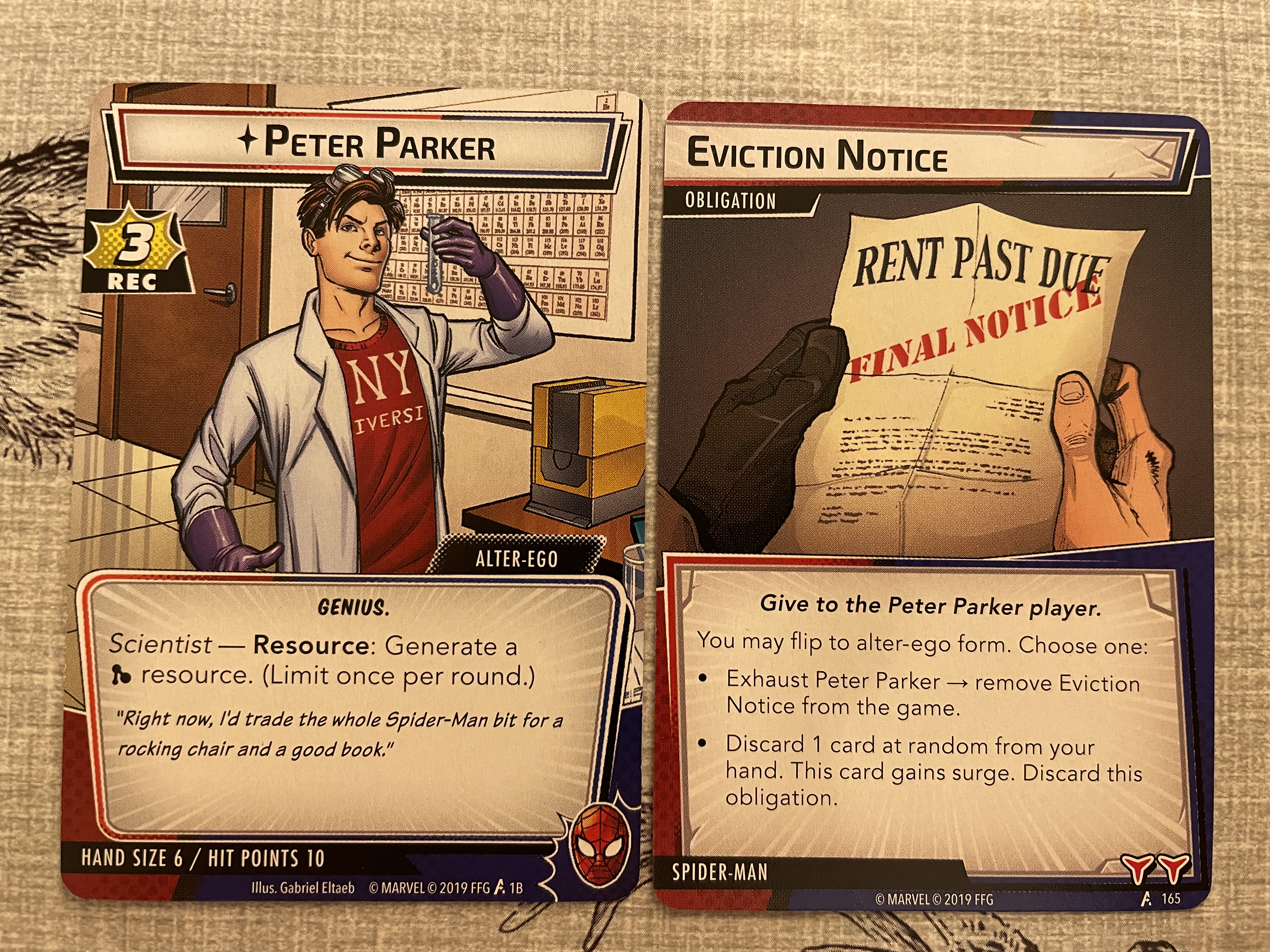
In addition to these alter-egos each player will submit an obligation card into the enemy deck at the start of the game, along with having a unique adversary on standby which may show up if a specific encounter card is drawn. These additional elements go a long way towards making each character feel unique and making the game feel re-playable.
With Great Power
My biggest fear going into this game, and the main reason I held of diving in for so long (despite being a life-long gamer and Marvel geek) was that the uniqueness of the heroes would not transfer well to this style of game whilst maintaining the balance required. The cynic in me also thought how easy it would be for Fantasy Flight Games to make this a pay-to-win fiasco by adding in over-powered heroes in sold-separately expansions. I can safely say this fear was removed from a single playthrough. A great example of hero uniqueness can be seen in Iron Man, this character begins the game with a hand-size limit of 1 card, but through that classic Tony Stark attitude you upgrade and ramp yourself up to be a Stark-tech certified power-house.
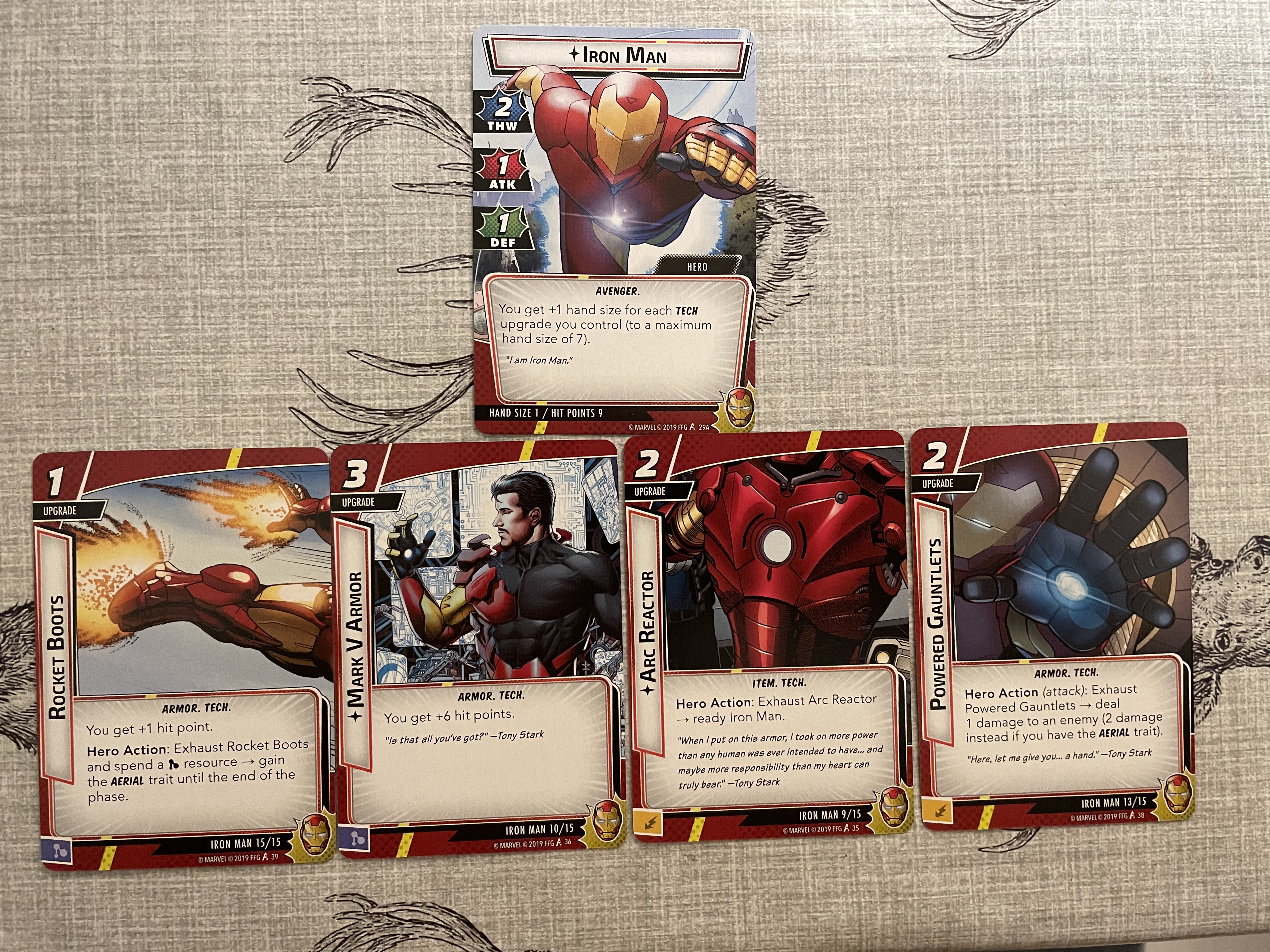
Each of the characters we played as felt thematic and useful to our two-player team. That’s not to say that some characters aren’t more fun. I definitely had more fun with Iron-Man than say She-Hulk and if you’re experienced with card games then some heroes may feel a bit simple. This does work to the games benefit at times, allowing you to play with a group who are very into Marvel but new to card games.
Additionally, in terms of character selection I was very happy to see a diverse set of heroes in the core set, and available in expansions. Having more of a choice in who I want to play as and the role I want to undertake is always welcome.
An ant has no quarrel with a boot
So far in this review we haven’t mentioned much about the enemies you will encounter in this game. When I think about enemies in cooperative board games I think of the simple like in Pandemic where you know pretty well what will happen each turn and of Gloomhaven where enemies have a much deeper and harder to predict move set. Marvel Champions sits somewhere in the lower-middle of that range. Most of the time I knew the enemy was going to attack and deal damage to us or they would generate some threat tokens. Perhaps I expect too much complexity and I am spoiled by some other games. Conversely, the relative simplicity in enemy moves does make this a much easier game to play and doesn’t require one player to play 2 roles (the AI and their hero).
Where the game does add a little bit of variety is in the side-schemes. The encounter deck can contain a few of these cards which create additional objectives for the heroes to clear. For example, civilians may come under attack which requires heroes to solve before they can get back to the main mission or a bomb scare may cause additional threat tokens to be generated per turn. These do cause an additional stress for the players, but they feel so pressing that there’s not really an option to ignore them, so if anything, they take agency away from the player(s).

The game does offer some basic methods to increase difficulty. Mostly this is in the choice to add additional cards or swap out easier cards for harder ones. In the introductory scenario where you fight Rhino you face up against Rhino I and Rhino II, for a harder challenge you can swap I for III and start at II. Extra threats can be added to the encounter deck so there’s always a chance of harder minions or sub-threats to turn up.
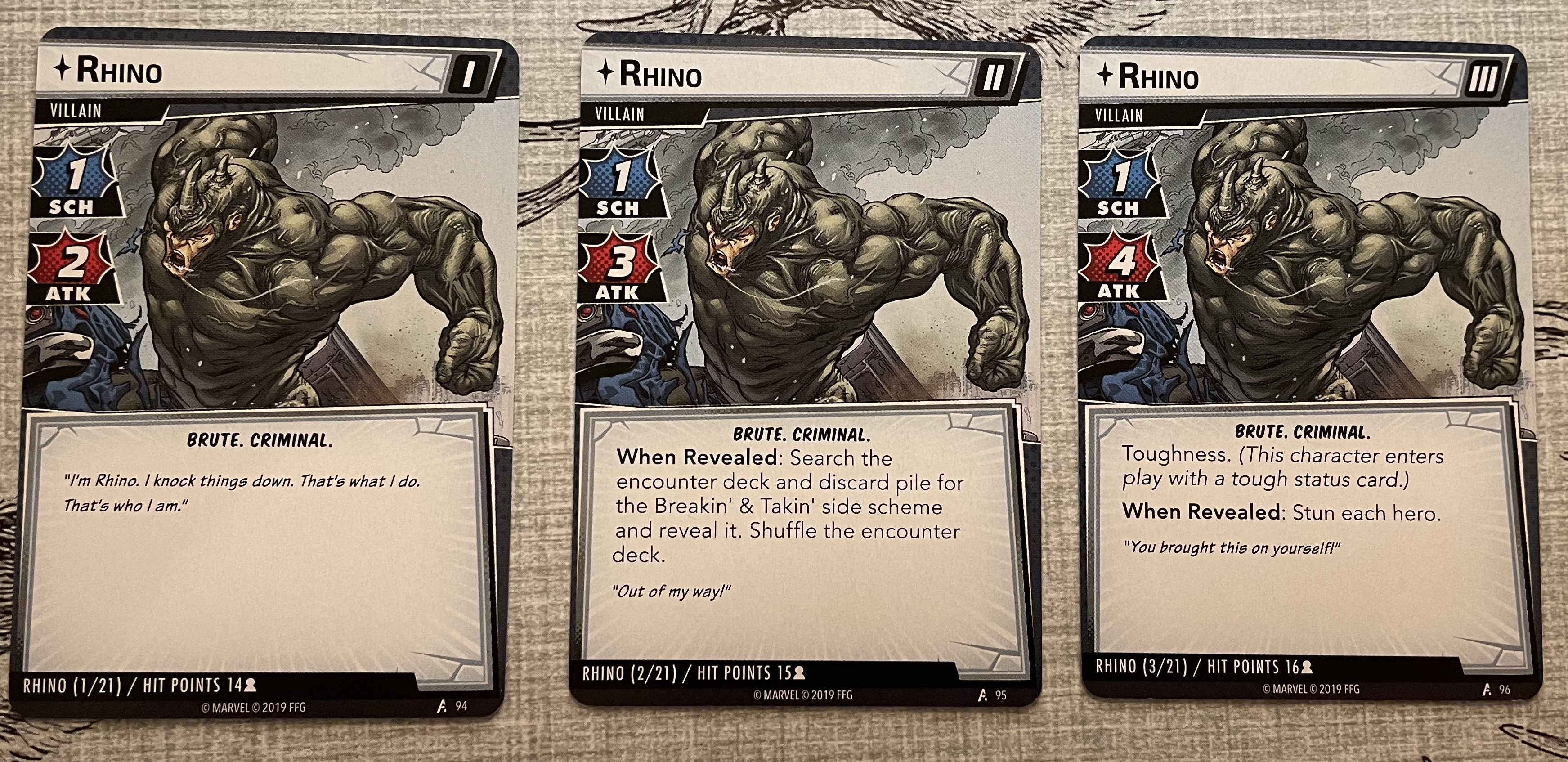
Components, box and table space
As far as game components go, those that come with Marvel Champions are pretty good. Card quality is good and the comic-style artwork of the cards is fantastic and on-point, tokens are cardboard too and the health trackers are self-assembled and work well. Fully setting up the game for two players can take up more space on a table than you would initially expect from a card game, some enemy encounters can create lots of minions which quickly take up a lot of room (for some reason the game uses player cards as minions during one fight and not just tokens, which would have made more sense to me).
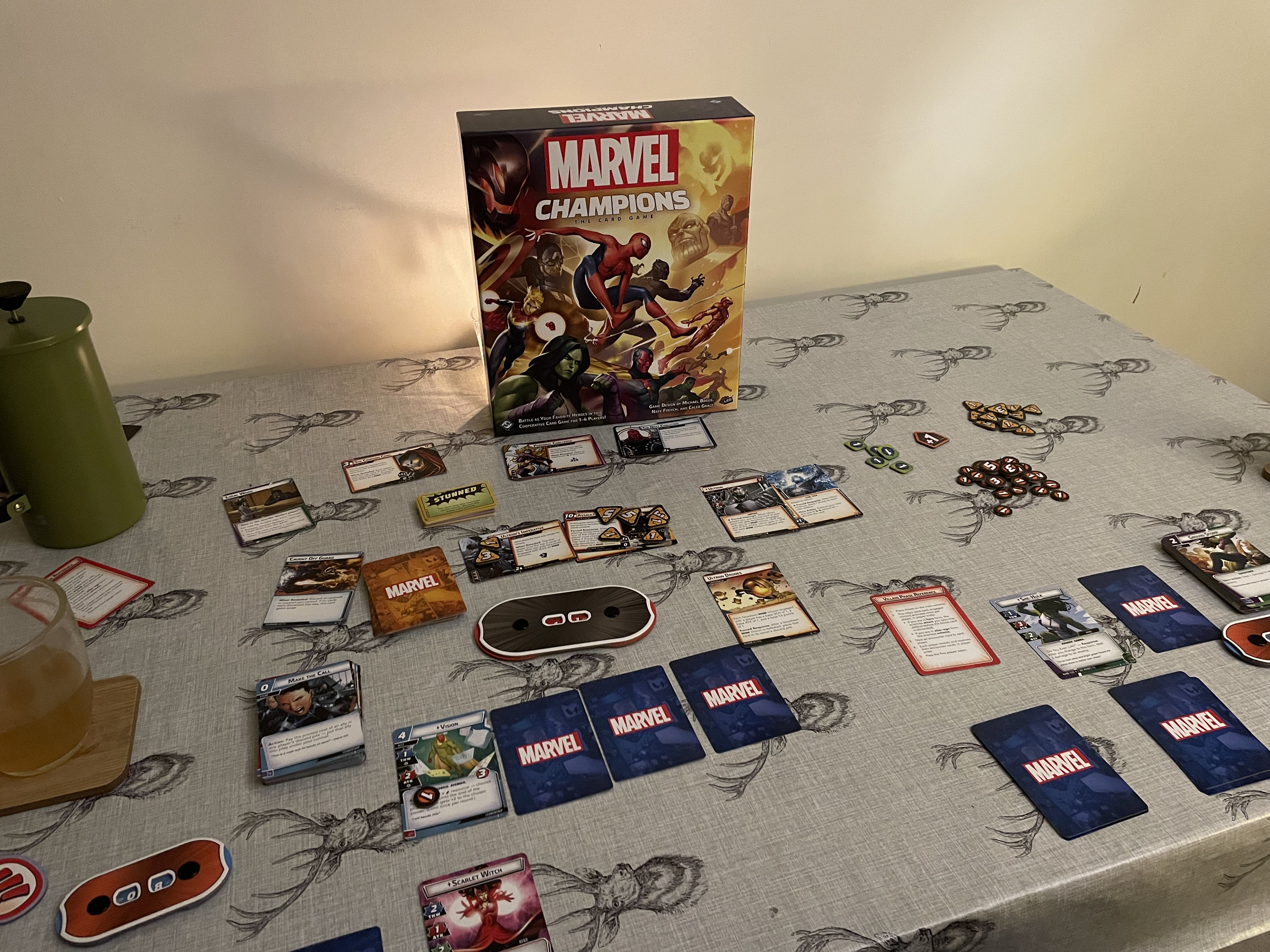
With these LCGs card management can be a huge annoyance and has for me previously being a barrier to getting a game to the table. I don’t want to play a game if 50% of my time is reorganising cards that have gotten shuffled in the box. In an almost monkey paw wish Fantasy Flight Games have added an insert into the game box for dividing cards, but give no dividers to actually make use of this. Whilst I wait for plastic dividers from Etsy I used some spare cardboard which does the job for now.

Summary
Theme and presentation can really make or break a board game, previously I have struggled to get into LCG’s despite being huge fans of Lovecraftian and Tolkien worlds those games didn’t click with me. The comic aesthetic and simple message of “hit bad guys” instantly hooked me on this game. It’s not for everyone, but if you like card games or want to get into them and have a love for Marvel then this game is an easy recommend.
- Artwork: 5/5
- Complexity: 3/5
- Replayability: 4/5
- Player interaction: 3/5
- Component quality: 3/5
Overall Score: 80